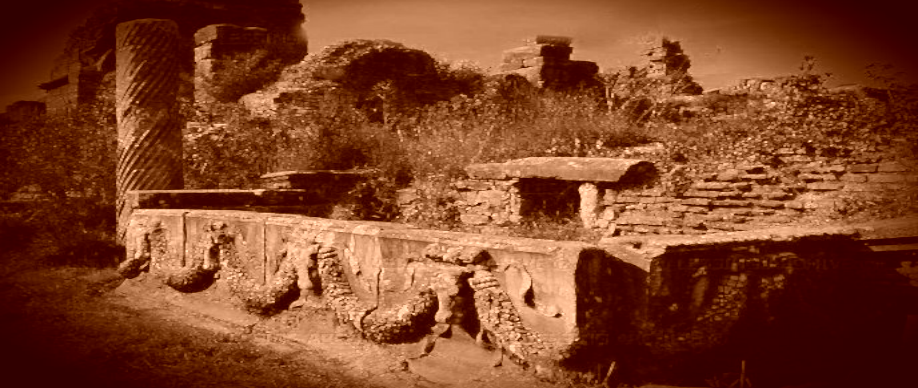A considerable part of the north side of the Harbour Street was allocated to sports grounds. In about the middle of this area was the Verulanus sports ground of which the excavation has not yet been undertaken. It was constructed together with the buildings around it during the reconstruction of that part of the city under the reign of the Emperor Hadrian. Next to the Verulanus sports ground was the Harbour Gymnasium.
The Gymnasium was constructed together with the building called the Harbour Baths. The entrance to it was through an elliptical courtyard in the lower parts of the Harbour Street. The courtyard was paved with coloured mosaics and had porticoes with columns on its sides. Facing the entrance, on either side of the door of the baths were two long and narrow pools of which the facades were decorated with bulls heads wearing wreaths. The Gymnasium was entered from the right, and the baths from the middle. Neither of these buildings have been restored.
Two life size statues found in the excavations of the Gymnasium, one a bronze statue of an athlete and the other a marble statue of a child playing with a duck, are on display in the Museum of Vienna. A considerable part of the materials of the baths were used in buildings constructed later. As the baths were repaired during the reign of Constantine II they were also called the Constantine Baths. The excavation is not completed.
Harbour Bath,


Ephesus was harbour city the passengers and crew were first required to bath in these Harbour baths before proceeding to the Arcadian way to enter the city. These baths also functioned as a quarantine for disembarking boat passengers.
Ephesus was one of the most important ancient harbour cities, yet it nevertheless had to contend with a continually progressive silting up caused by natural sedimentation processes. In order to guarantee an optimal connection to the sea, the settlement was moved on numerous occasions, until an artificial landing was created with the construction of the late Hellenistic-Roman harbour which was connected to the sea by an originally broad canal.
An impressive scenario was offered to visitors: the northern slope of the Bülbüldağ was bordered by tomb buildings, and after the 3rd century A.D. a necropolis also grew up along both sides of the canal.
From the harbour basin, which was framed by both functional and prestigious buildings, the visitor arrived at the city via three gates. The harbour region was without doubt the pulsating centre of the city with markets, harbour baths, sacred structures and numerous administrative buildings.